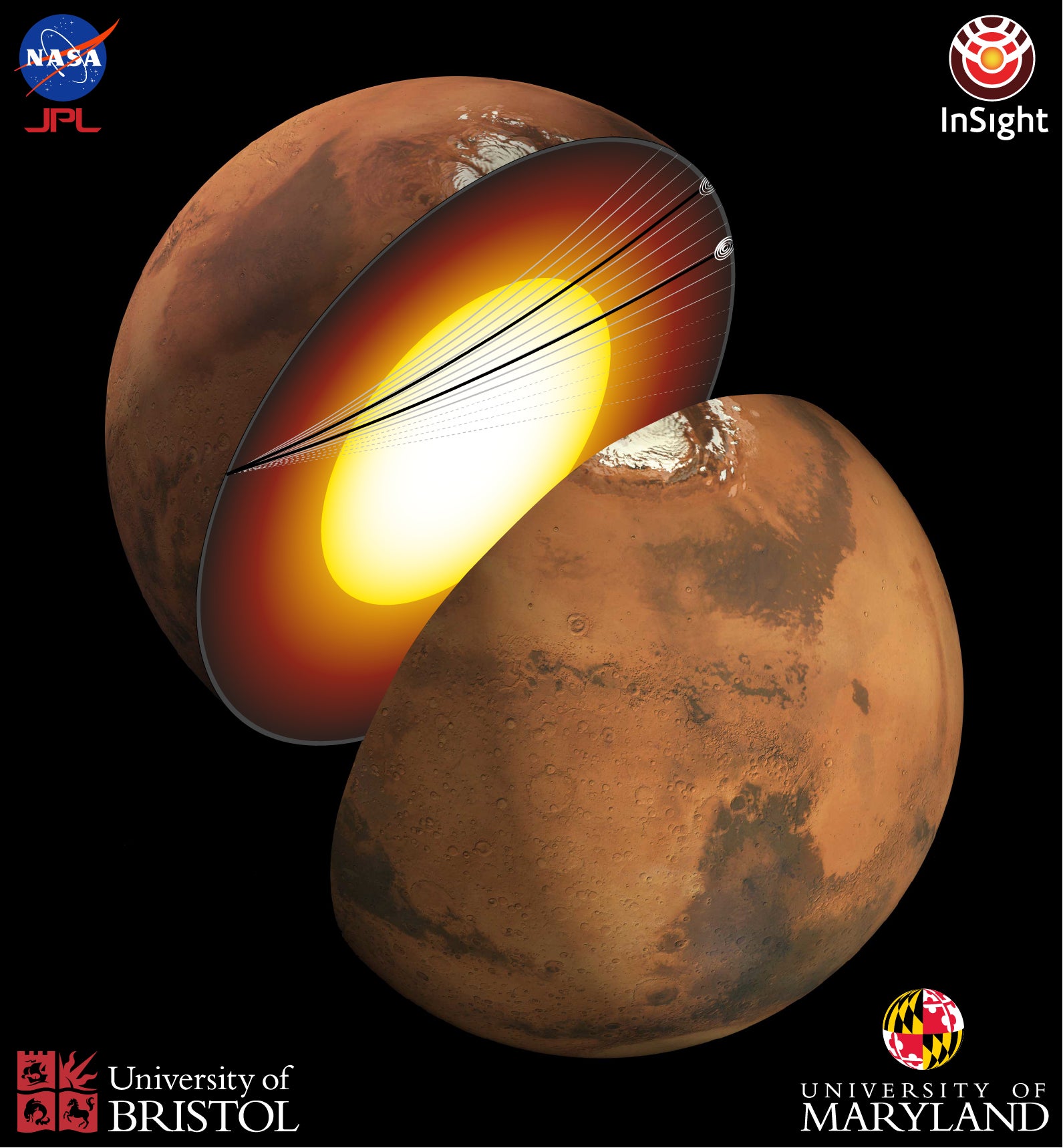
Scientists have detected sound waves moving through the Martian core for the first time, providing new evidence of this Formation of the fourth planet from the sun.
the The now-decommissioned InSight lander Seismic wave detection of two signals: One From the quagmire (shake up the planet) and the other From one meteorite impact on another Mars side. Team search is published Today in Proceedings of the National Academy of Sciences.
Jessica Irving, a planetary scientist at the University of Bristol and lead author of the paper, said in Bristol: launch. “Instead of being just a ball of iron, it also contains a large amount of sulfur, as well as other elements including a small amount of hydrogen.”
The team found that about a fifth of the mass in the Martian core is made up of light elements such as sulfur and oxygen. This is much more than the ratio found in Earth’s core, providing some hint as to why Earth is so energetic and Mars appears to be devoid of life.

Nicholas Schmier, a University of Maryland geoscientist and one of the paper’s authors, said V launch. “The Martian core does not generate this protective shield, so the planet’s surface conditions are hostile to life.”
The 2021 research found that the Martian core was larger Than previously thought, the new work finds that the core is actually a little more dense and smaller, with two radii in between 1,106 miles and 1,125 miles.
InSight stopped responding to NASA voices in December After years of Martian dust accumulating on the solar panels, effectively choking the spacecraft to death. landed on Mars in November 2018, And the task It lasted twice as long As planned by NASA scientists.
In its time on Mars, InSight detected more than 1,300 earthquakes using its seismometer. The instrument detects seismic waves that bounce inside the planet, which in turn allows scientists to discern aspects of the planet’s formation.
Scientists found it last year Meteorite impacts on Mars as well as evidence of volcanic activity Courtesy of InSight’s Sensitive Seismometer.
Although InSight is no longer active, researchers They’re still filling up probe data, Giving the task an afterlife is very fruitful.
More: RIP, InSight: Scientists pay tribute to Mars rover
